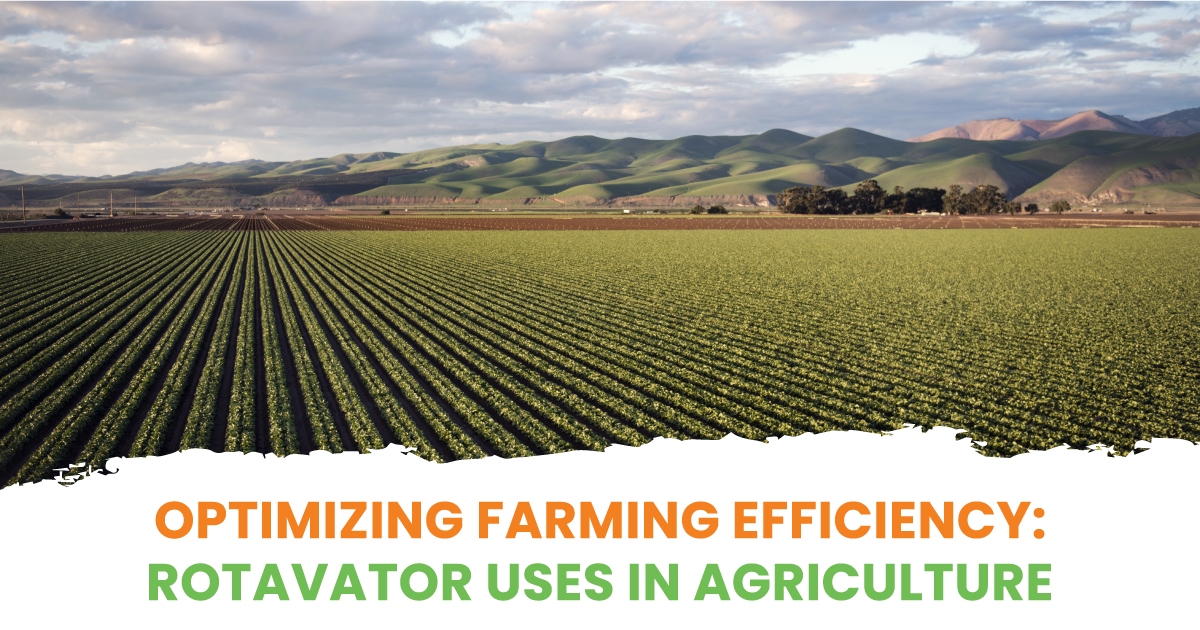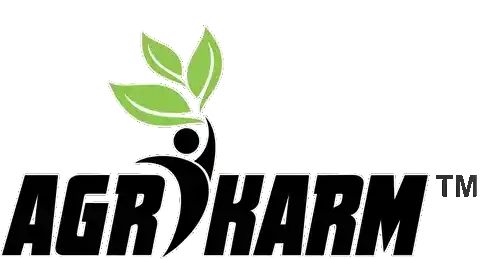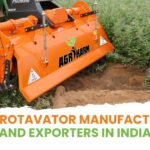
Rotavator uses in agriculture make them an indispensable asset for modern farmers. They are an essential tool in modern agriculture, aiding in efficient land preparation and contributing to better crop yields.
This blog unveils the rotavator uses in agriculture for maximum productivity.
Basics of Rotavators & Its Features
A rotavator, also known as a rotary tiller, is a piece of agricultural machinery used to prepare the soil for planting by mechanically breaking up, aerating and mixing the soil.
It is commonly used in farming, gardening, and landscaping to create a fine, well-aerated seedbed. Rotavators can be powered by a tractor’s power take-off (PTO) or be self powered with an engine.
Features of a Rotavator
- Blades/Tines: Rotavators come with a varying number of blades or tines, usually arranged in a helical pattern. These blades are designed to cut through and turn over the soil. The blades are typically made of hardened steel for durability and efficiency.
- Width: The working width of a rotavator can vary, allowing for different sizes of soil beds to be prepared. Common widths range from 1 meter to over 3 meters.
- Depth Control: Many rotavators have adjustable depth control, allowing the operator to set how deep the blades penetrate the soil. This is useful for different types of crops and soil conditions.
- Gearbox: The gearbox controls the speed of the blades. A multi speed gearbox allows for adjustments to match the soil conditions and the desired tillage depth.
- Side Transmission: Rotavators can have chain or gear side transmissions, impacting durability and maintenance needs. Gear-driven models tend to be more durable and require less maintenance.
- Power Source: As mentioned, rotavators can be PTO-driven or have their own engines. PTO-driven models are attached to tractors, while engine powered models are often used for smaller plots and gardens.
- Frame and Body: The frame and body of the rotavator are constructed from heavy duty steel to withstand the rigors of soil preparation and to provide stability during operation.
- Safety Features: Safety shields and guards are included to protect the operator from flying debris and to prevent accidental contact with moving parts.
- Versatility: Some rotavators come with attachments or the ability to adjust configurations for different tasks such as weeding, cultivating and even mulching.
- Ease of Maintenance: Accessible grease points, replaceable blades, and easy-to-service gearboxes are important for the longevity and efficient operation of the rotavator.
Rotavator Uses in Agriculture
Rotavators are versatile and essential agricultural implements used for various purposes in farming.
Below are some of the primary uses of rotavators in agriculture:
- Soil Preparation: Rotavators are primarily used for preparing the soil before planting. They break up compacted soil, mix soil layers, and create a fine, even seedbed, which is ideal for sowing seeds or planting seedlings.
- Weed Control: Rotavators help in controlling weeds by uprooting them and incorporating them into the soil. This not only reduces the weed population but also helps in adding organic matter back into the soil.
- Incorporating Crop Residues: After harvest, crop residues like stubble, straw and other plant debris can be chopped and mixed into the soil using a rotavator. This helps in improving soil fertility and reducing the need for burning residues, which is harmful to the environment.
- Soil Aeration: By breaking up the soil, rotavators help improve soil aeration. This allows roots to penetrate deeper and enhances the availability of oxygen to soil microorganisms, which is beneficial for plant growth.
- Mixing Fertilizers and Manure: Rotavators can be used to evenly mix fertilizers, compost and manure into the soil, ensuring the nutrients are well-distributed and readily available to crops.
- Landscaping and Garden Preparation: In addition to large scale farming, rotavators are also used in landscaping and garden preparation. They help in creating a smooth and leveled surface for lawns, flower beds, and other garden areas.
- Breaking Up Hardpan: In fields with hardpan layers, rotavators can help break up these compacted layers, improving water infiltration and root growth.
- Cover Crop Management: Rotavators are used to incorporate cover crops into the soil. Cover crops are grown to improve soil health, and their incorporation enhances organic matter content and nutrient availability.
FINAL VERDICT
Rotavator uses in agriculture make them an essential tool for modern farming and gardening, contributing to increased efficiency and productivity. With the increased contribution in productivity, rotavators bring in profitability for farmers in the long run.


 Admin
Admin 

